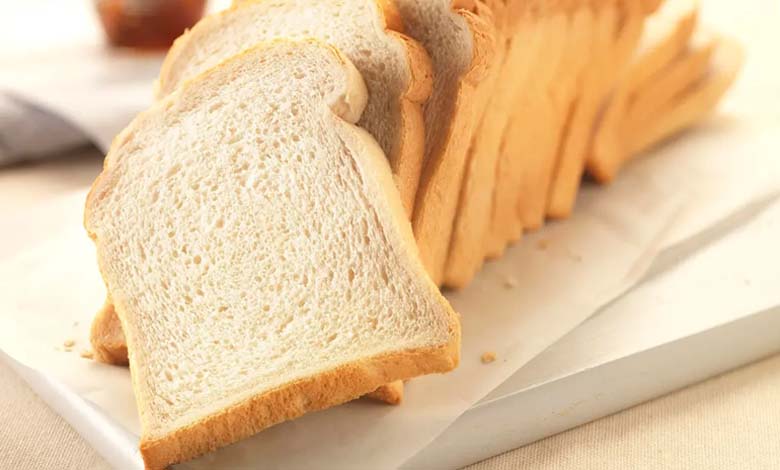Why Do Nutrition Experts Warn Against Eating White Bread?

White bread has long held a cherished place in traditional diets across the globe, often associated with comfort, convenience, and cultural familiarity. However, behind this seemingly harmless staple lies a processed product that modern nutrition science increasingly criticizes. Over the past few decades, a growing body of evidence has led dietitians and public health experts to issue strong warnings about the regular consumption of white bread. This article explores the reasons behind this concern, examining both the biochemical impact of white bread and its long-term implications for health, while also offering healthier alternatives grounded in scientific insight.
-
Why Is It Recommended to Follow a Low-Fiber Diet?
-
To Avoid Insulin Resistance and Weight Gain… Beware of “Refined Carbohydrates”
Refined and Nutrient-Depleted Flour
White bread is made using refined wheat flour, which involves removing both the bran and the germ of the grain—its most nutrient-dense components. This process leaves only the endosperm, a carbohydrate-rich part with limited nutritional value. Although refining enhances shelf life and results in a softer texture and lighter color, it strips the flour of essential dietary fiber, antioxidants, and key micronutrients such as iron, magnesium, zinc, and B vitamins (notably B1, B3, and B6). As a result, white bread becomes a source of primarily simple carbohydrates, offering little in the way of nourishment and contributing to an unbalanced diet when consumed frequently.
-
What are the preferred foods for lowering cholesterol? Advice from an expert
-
Can You Get the Benefits of Retinol from Food?
High Glycemic Index and Insulin Spikes
One of the principal criticisms of white bread is its high glycemic index (GI)—typically between 70 and 85. This means that it is rapidly broken down into glucose in the bloodstream, triggering a quick and substantial insulin response. Such rapid fluctuations in blood sugar not only create short-term energy crashes and hunger spikes, but also lead to fat accumulation, particularly around the abdomen, and contribute to insulin resistance. Insulin resistance is a major risk factor in the development of type 2 diabetes and other metabolic disorders. In this context, white bread acts more like a fast-acting sugar than a balanced carbohydrate source.
-
Why You Should Not Use Food as a Reward for Your Child
-
After the Ban: Which Foods Still Contain Red 3 Dye?
Poor Satiety and Metabolic Consequences
Unlike whole grain or high-fiber breads, white bread provides minimal satiety, meaning it fails to keep hunger at bay for extended periods. Its quick digestibility and lack of fiber result in a cycle of rapid blood sugar rises and subsequent cravings, leading to overeating and a constant influx of glucose into the body. Over time, this can contribute to visceral fat accumulation and increase the risk of cardiovascular disease, hypertension, and metabolic syndrome. White bread thus plays a significant role in the deterioration of metabolic health, especially when it becomes a dietary staple.
Long-Term Health Risks
Extensive research has associated high consumption of refined grains, particularly white bread, with a greater incidence of chronic diseases. Type 2 diabetes, coronary heart disease, obesity, digestive disorders, and even some cancers—particularly of the colon—are more prevalent among individuals who rely heavily on refined carbohydrates. By contrast, the protective effects of whole grains have been repeatedly confirmed in large-scale studies. Whole grains support gut health, reduce systemic inflammation, and improve blood lipid profiles. White bread, by comparison, weakens the gut microbiome, contributes to oxidative stress, and fosters a chronic inflammatory environment that undermines overall health.
-
The Ideal Time to Consume Probiotic Foods
-
3 Foods That Reduce the Risk of Heart Disease and Promote Gut Health
Cultural and Economic Factors
Despite these findings, white bread remains a dietary staple around the world. Several factors explain its persistence: it is inexpensive, widely available, culturally ingrained, and generally well-liked for its soft texture and neutral taste. Moreover, a lack of public awareness about its health impacts contributes to ongoing consumption. Complicating matters further is deceptive marketing: many products labeled as “multigrain” or “whole wheat” actually contain mostly white flour, providing little improvement over traditional white bread. Consumers are often misled into thinking they are making healthier choices when, in fact, the nutritional differences are minimal.
Healthier Alternatives
To support better health outcomes, nutritionists advocate for the inclusion of whole grain breads made from unrefined flours rich in fiber and micronutrients. Breads made with sourdough fermentation can also be beneficial, as they tend to have a lower glycemic index. Other alternatives include breads made from rye, spelt, or legume-based flours, such as chickpea or lentil flour, which offer more protein and fiber per serving. While these options may be more expensive or harder to find in some regions, their nutritional advantages make them superior choices for long-term health and well-being.
-
“Fatty Meats” in the Spotlight: The Most Harmful Foods for the Liver
-
Best Foods to Prevent Colorectal Cancer for Generation Z
White bread may be a familiar and comforting food, but its role in modern chronic disease cannot be ignored. It is a high-glycemic, low-fiber product that undermines metabolic health when consumed in excess. As dietary patterns evolve and public health challenges mount, individuals must take responsibility for making informed food choices. Opting for whole grain, fiber-rich alternatives to white bread is not merely a dietary upgrade—it is a strategic investment in one’s long-term health.












